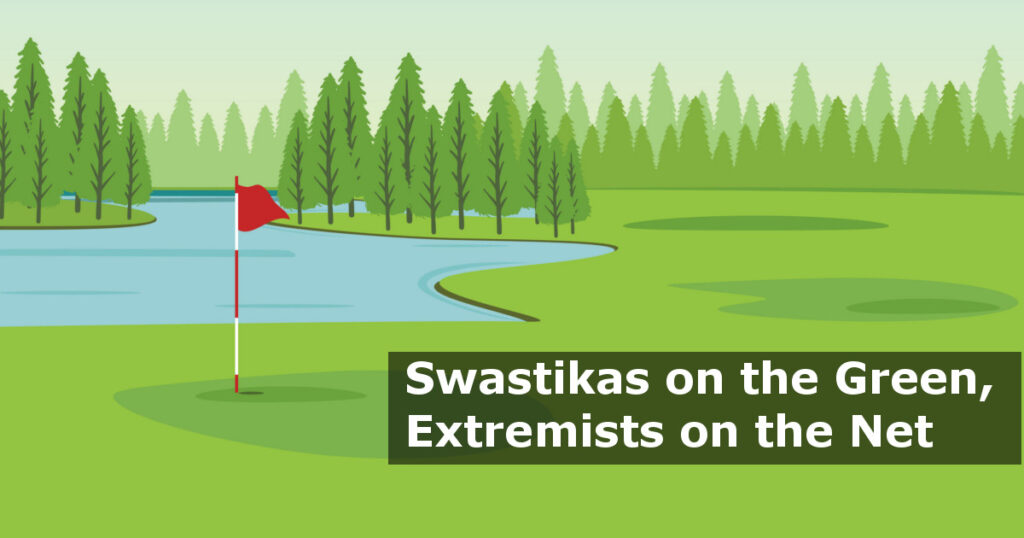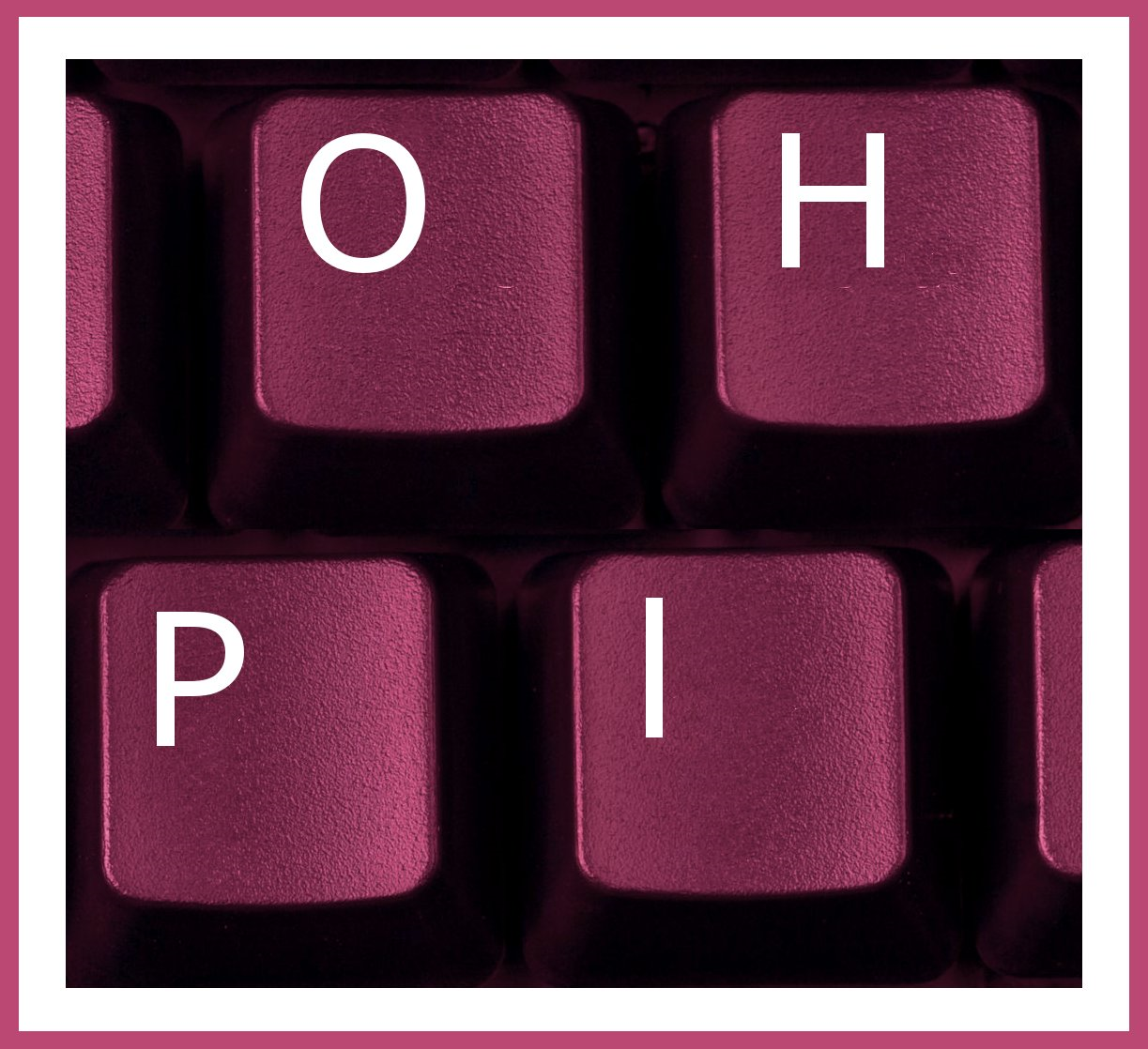
Our CEO, Dr Andre Oboler, was on SBS World News Radio earlier tonight discussing the Swastikas painted on the green at the Cranbourne Golf Club and the dangers rising online hate during Coronavirus pose both now and as restrictions begin to be eased. This interview was pre-recorded and some critical elements of our commentary were omitted and are therefore provided in Dr Oboler’s comments below.
Listen to the SBS World News segment.
While we stand by the comments included in the broadcast in relation to the rise in online hate during COVID-19 and the risks going forward, Dr Oboler’s omitted comments explained why the Cranbourne Golf Club incident is highly unlikely to be connected to this problem.
We need to focus to keep people safe
By Dr Andre Oboler, CEO of the Online Hate Prevention Institute
In my full interview with SBS I noted it is not just antisemitism, but also Islamophobia, racism against the Chinese community and Asians more broadly which is currently rising online. Moving forward these and other groups will be at increased risk. Far right groups are likely to grow during times of high unemployment. Minority groups will be scapegoated and blamed for delays and difficulties in getting life back to normal and people back into work.
I’d add to that some observations I shared in an interview with 10 Daily published yesterday:
- “We’ve seen some of the formerly anti-Muslim or anti-mosque groups on Facebook now move onto anti-coronavirus posting, jumping on new targets. There’s anti-Asian or anti-Chinese messaging in groups which were not set up with that in mind”
- “They’re jumping on what’s topical. It’s the same as the ‘African gangs’ rhetoric a few years ago. They will jump on whatever will give them energy.”
- Commenting specifically on a far-right group that has been engaging in stickering in Sydney, “They’ve been in isolation with everybody else, and they want to get out now that restrictions are starting to be lifted. What they’re doing is a social activity for them, that they can engage in as a group. It’s boredom.”
I’ll be discussion these and other impacts of Coronavirus on online racism with Australia’s Race Discrimination Chin Tan and the Asia Centre’s Regional Director James Gomez next Wednesday (27 May, 7:30pm Melbourne time) in an IEEE Computer Society Webinar (free, but advanced registrations needed). These are matters needing serious attention, from technology experts, politicians and civil society – in Australia and globally.
The last thing we need right now is to bolster the sense of importance of these hate groups. They like to pretend they have a large and quiet base of support. When it comes to neo-Nazis, any such views are delusional. Playing in to their fantasies, including by giving them publicity in the media, or attributing other unassociated random acts to them, will only increase the danger they pose and the energy with which they promote their agenda of hate.
In my view, the Cranbourne incident was vandalism and not connected to the rise in far-right extremism. Two “swastikas” have been discussed in the media, but as photographs of the vandalism clearly show, one was a swastikas while the other was a sauwastika – it’s mirror image.
Only the swastika (i.e. 卐) which faces right is a Nazi symbol. The sauwastika (i.e. 卍) faces left is not. Both the swastika and the sauwastika were cultural symbols long before the Nazis adopted the swastika. Hinduism, Buddhism and Jainism each make use of them. The earliest examples go back to 10,000 BCE, well before the Nazis. The vandals in Cranbourne, far from being indoctrinated in neo-Nazi and white supremacist ideology, in fact know next to nothing about the topic. The other graffiti they painted, including a giant penis and homophobia abuse supports the idea their aim was to be abusive and offensive and the culprit is far more likely to be a bored teen than a dangerous terrorist. An indoctrinated neo-Nazis with a white supremacist ideology and a risk of turning violent just wouldn’t get this wrong.
In a panic inducing sounds grab at the end of the news segment another interviewed commentator says, “We have to be on our guard, we cannot dismiss or downplay the threat of these kinds of individuals. We don’t need Christchurch happening here to actually wake up and understand that these particular individuals pose a serious threat”. I do not believe that comment is justified in this instance. While we should not down play the use of hate symbols, nor should we treat every incident as an impending terrorist attack. However offensive the symbols and slogans painted on the green are, they are a long way from last years Christchurch mosque shootings which left 51 people dead.
Swastika are not welcome. We should speak out against them whether they are use in graffiti or flown from flags on private property. They are a hate symbol designed to offend. At the same time, not every scribbled Swastika is proof of an active and potentially violent neo-Nazi group. There are enough real threats out there without needing to panic the public and jump at shadows. Attributing the idle vandalism, likely of bored teenagers, to extremists will only embolden the real neo-Nazis. It risks them also mistaking such boredom induced vandalism for serious ideological support and deluding themselves into thinking they are more numerous than their tiny numbers. There are real threats which need attention. This situation simply needed to be cleaned up, and if the vandals can be caught, the magistrates court is more than capable of dealing with them.
We need to tackle the real threats, especially the online spread of violent extremist indoctrination, we do not need to spread fear and panic over every item of graffiti. There is serious work to be done, as the Online Hate Prevention Institute did after four deadly terrorist attacks last year. Our work directly led to the removal of multiple terrorist manifestos as well as other changes that increase public safety. This is where governments, and indeed charities, need to put their limited resources and energy. It’s easy to get media headlined by spreading fear and panic… it’s harder to address the real threats and keep people safe.
Comments and Support
Comments on this briefing can be made on this Facebook post.
The Online Hate Prevention Institute is a Registered Charity that tackles all forms of online hate. To support our work on Antisemitism, which will be our key focus in June 2020, please join the campaign. You can also see our past work on antisemitism or see other areas of work via our homepage. You can support our work more generally at any time by making a donation at https://ohpi.org.au/donate/. You can also join us on Facebook, or join our mailing list.
